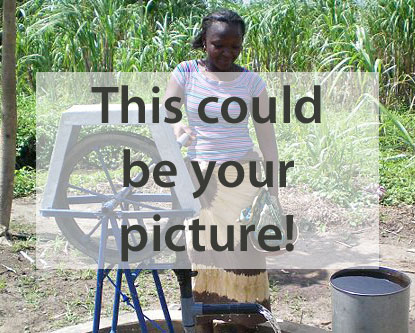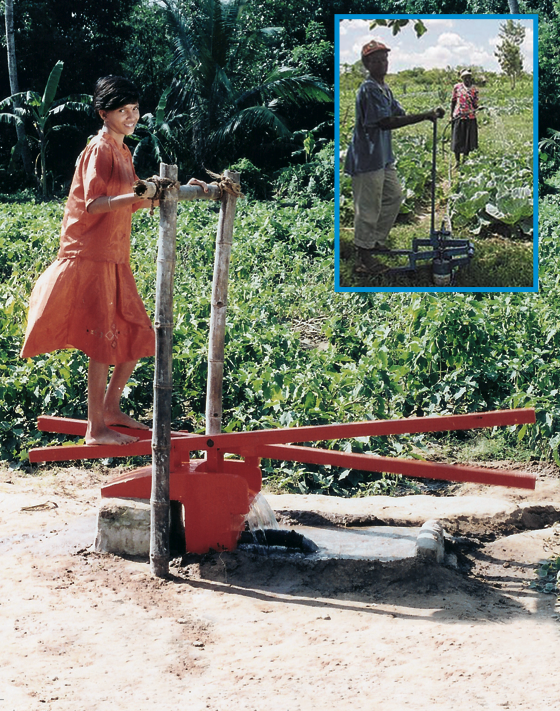Treadle pump
| |
History and social context
The treadle pump for irrigation was developed in the late 1970's in Bangladesh. After wide-scale promotion by IDE International Development Enterprise, they are now being produced in 300 local workshops and used by more than one million poor rural families that otherwise could not have afforded an irrigation pump. With this technology, many families have increased their income. Some farmers who started with this pedal pump have now bought a motorized pump.
The treadle pump is cost effective; it cost US$ 20 in Bangladesh and generates US$ 100 or more per year. Together, these pumps add over US$ 100 million every year to the GNP of Bangladesh. Production and sales are now sustainable without any external aid.
The treadle pump is also being promoted in Africa where it is installed by organisations like Kickstart (former Approtec) and EW Enterprise Works. Models of the treadle pump like the Moneymaker and the Soka-pump are now widely used for small-scale "spray" irrigation.
Up to 1.3 million treadle pumps are in use Asia, and some 35,000 in Eastern Africa.
Suitable conditions
The treadle pump can be used on small farms which draw irrigation water from 1-7 m deep. A treadle pump can pump around 100 litres / min from 4 meters depth.
Because a treadle pump is a suction pump, the depth from which water can be drawn is limited to 7m.
| Advantages | Disadvantages/limitations |
|---|---|
| - Simple and cheap - Produced in local workshops. |
- Pumping depth limited to 7m. |
Technical specification
Operation
Maintenance
Manufacturing
Cost
- A treadle pump costs US$ 20 in Bangladesh, and US$ 50-80 in Africa.
- The cost of introduction lies around US$ 20,000 per project, including training, engineering and first production.
Country experiences
The Treadle Pump is widely used in Asia, and increasingly used in Africa.
Manuals
Movies
- Treadle pumps in Uttar Pradesh, India, introduced by IDE-India. Movie produced by Ashden Awards.
External links
- International Development Enterprises (IDE)
- MoneyMaker treadle pump produced by Kickstart (Kenya, Tanzania)
- Pedal Pump, produced by Enterprise Works
- Treadle Pump programmeIDE-India
- "Our life is much better" - a case study from Zambia, by IDE
- Ashden Award article on Treadle Pumps by IDE-India
References

|

